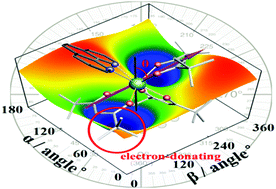Four mononuclear dysprosium complexes, namely, [Dy(thd)3(MeOH)2] (1), [Dy(thd)3(Phen)] (2), [Dy(thd)3(Dpq)] (3) and [Dy(thd)3(Dppz)] (4) (thd = 2,2,6,6-tetramethyl-3,5-heptanedione; Phen = 1,10-phenanthroline; Dpq = dipyrazine[2,3-f:2′,3′-h]quinoxaline; and Dppz = dipyrido[3,2-a:2′,3′-c]phenazine), have been designed and isolated by reactions of Hthd with DyCl3·6H2O and corresponding auxiliary capping ligands such as Phen, Dpq and Dppz. The crystal structure analysis exhibits that Dy(III) ions in complexes 1–4 adopt distorted square antiprism geometry with D4d symmetry. Magnetic analysis reveals that all complexes 1–4 exhibit slow magnetic relaxation with the barrier heights (Ueff/kB) of 45.1 K, 98.4 K, 128.9 K and 89.4 K, respectively. The butterfly magnetic hysteresis loops were observed up to 5 K for complex 2. The co-relationship between the barrier heights and the structure in terms of the Dy–Oβ-diketone bond lengths, the quantify distortion degree (σα2 or σΦ2) and the deviation angles (θ) of magnetic easy axes for the SAP coordination environment were investigated and discussed.

